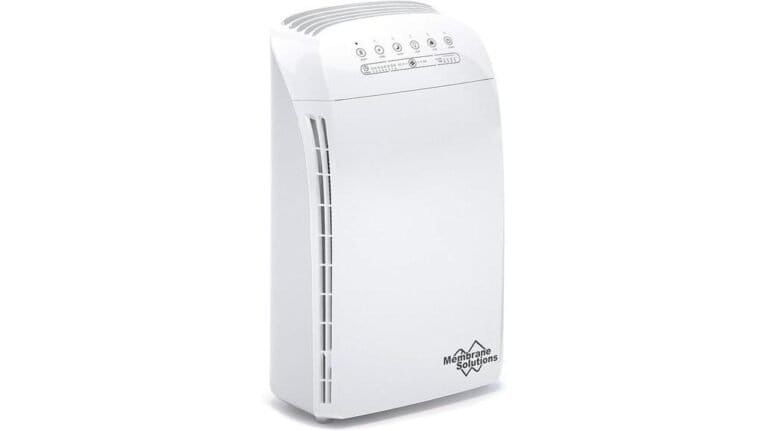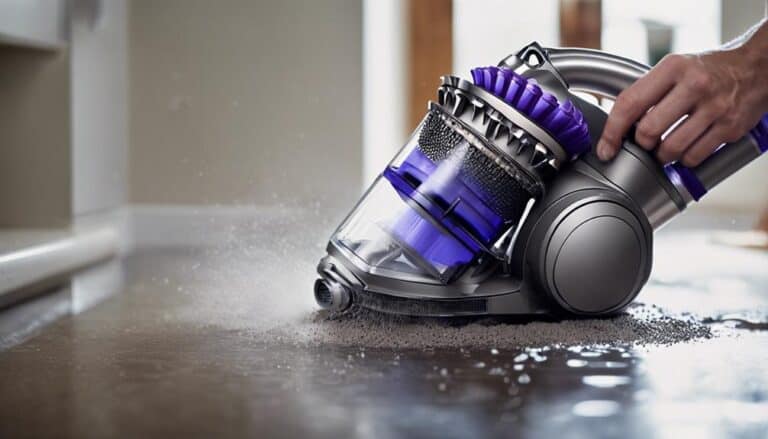Eliminate Dog Dander and Breathe Easy: Effective Tips and Techniques
Do you find yourself constantly sneezing or wheezing around dogs? Does the thought of visiting a friend with a furry canine companion bring on an allergic response? If so, we have good news for you!
In this article entitled “Eliminate Dog Dander and Breathe Easy: Effective Tips and Techniques,” we will explore various tips and techniques to help you eliminate dog dander from your environment, allowing you to breathe easy and enjoy the company of our four-legged friends without suffering from allergies.
From simple cleaning routines to advanced air purifying techniques, we’ll provide professional guidance on how to successfully tackle this common issue. So sit back, relax, and get ready to discover practical solutions that will transform your relationship with dogs forever.
Understanding Dog Dander: What is it and why is it a problem?
Dog dander refers to the tiny particles of dead skin that dogs shed regularly. These tiny flakes can easily become airborne and settle on surfaces in your home, including furniture, carpets, and bedding. While dog dander itself is not harmful, it can trigger allergic reactions in certain individuals.
The problem with dog dander arises for people who are sensitive or allergic to it. When these allergens come into contact with their respiratory systems, they can cause symptoms such as sneezing, coughing, itching, watery eyes, and even difficulty breathing.
Understanding dog dander becomes essential when trying to eliminate its presence in your surroundings. By controlling dog shedding and minimizing exposure to allergens like dander, you can ensure a healthier living environment for both allergy sufferers and non-allergy sufferers alike.

Identifying Allergy Symptoms: How to know if you are allergic to dog dander
Allergic reactions to dog dander can vary in severity and affect each person differently. To determine if you have allergies, it’s important to recognize the common symptoms associated with a reaction to dog dander.
- Sneezing and Runny Nose: If you often find yourself sneezing or experiencing a runny nose when around dogs, this could be a sign of an allergy.
- Watery and Itchy Eyes: Red, watery, and itchy eyes are typical symptoms experienced by those allergic to dog dander.
- Skin Rashes or Hives: If your skin becomes red, swollen, or develops hives after contact with dogs, it may indicate an allergy.
- Coughing and Chest Tightness: Allergies can also cause coughing fits or a sensation of tightness in the chest due to increased mucus production.
If you consistently experience these symptoms when in close proximity with dogs or while spending time indoors where there is dog presence, it’s important to consult with an allergist for proper diagnosis and treatment options. An allergist can conduct tests such as skin prick tests or blood tests specific for pet allergies to confirm your sensitivity towards dog dander.
Cleaning Your Home: Effective strategies for removing dog dander from your living space
Effective strategies for removing dog dander from your living space
Regular vacuuming is key in reducing dog dander in your home. Use a vacuum cleaner with a HEPA filter to effectively capture and trap pet allergens. Focus on areas where your dog spends most of their time, such as carpets, rugs, upholstery, and bedding.
Frequent dusting and wiping down surfaces can also help remove lingering dander particles. Use damp microfiber cloths or electrostatic wipes to attract and hold onto the tiny allergens instead of simply spreading them around.
Washing your dog’s bedding frequently can significantly reduce the amount of dander in your home. Launder it using hot water (at least 130°F) with hypoallergenic detergent to ensure thorough cleaning and neutralization of any allergens present.
Investing in an air purifier designated for pet allergies is another effective way to eliminate dog dander from your living space. Look for models that are specifically designed to capture microscopic particles like pet hair, pollen, dust mites, mold spores—all common triggers found in homes with dogs.
Remember, consistency is essential when implementing these strategies—regular maintenance will go a long way towards creating an environment that allows you to breathe easy even if you have pets at home!
Grooming Tips: How to keep your dog’s dander under control through proper grooming
Grooming Tips: How to Keep Your Dog’s Dander Under Control
Regular grooming is key to managing your dog’s dander and keeping the air in your home allergen-free. Here are some effective tips and techniques to help you achieve this:
- Brushing: Regularly brush your dog’s coat to remove loose hair and dead skin cells, which are major contributors of dander. Choose brushes designed for your specific breed or coat type to ensure proper removal.
- Bathing: Bathing your dog once a month with a hypoallergenic shampoo can help reduce dander buildup. Be sure not to over-bathe, as excessive bathing can strip essential oils from their skin, leading to dryness and increased dander production.
- Groomer Visits: Consider scheduling regular visits with a professional groomer who understands how to properly clean and maintain your dog’s coat. They have the expertise required for thorough cleaning without causing stress or discomfort for your pet.
By following these simple grooming practices, you can significantly decrease the amount of dander shed by your furry friend, ultimately providing relief for anyone suffering from allergies or respiratory issues inside your home.
Creating Dander-Free Zones: Designating areas in your home where you can escape from dog dander
Creating Dander-Free Zones
To create dander-free zones in your home, designate specific areas where you can escape from dog dander. This will help to reduce allergic reactions and provide a safe space for those with allergies to retreat to when needed.
- Choose a room: Select a room where your dog is not allowed to enter. This could be a bedroom, study, or office space.
- Keep the door closed: Make sure the designated dander-free zone has a door that can be closed at all times. This will prevent any dander from spreading into the rest of the house.
- Invest in air purifiers: Install high-quality air purifiers in these designated areas to filter out any remaining allergens and improve air quality.
By creating these specific spaces within your home, you can enjoy some relief from dog dander and breathe easy knowing there are places you can go without worrying about allergy symptoms flaring up.
Air Purification Techniques: Using air purifiers to reduce dog dander in your environment
Dog owners who suffer from allergies or asthma know how difficult it can be to live with the constant presence of dog dander in their homes. Thankfully, there are effective air purification techniques that can help reduce dog dander and improve indoor air quality.
- Invest in a high-quality HEPA air purifier: HEPA (High Efficiency Particulate Air) filters are designed to capture even the tiniest particles, including dog dander. Look for an air purifier specifically designed for pet dander removal, as these typically have additional features such as activated carbon filters to tackle odors.
- Place the air purifier strategically: To maximize its effectiveness, place the air purifier near areas where your dog spends most of its time. This could be your living room or bedroom. Consider using multiple units if you have a large home or multi-level property.
- Regularly maintain and replace filters: Filters should be cleaned or replaced according to manufacturer’s instructions. Neglecting this important step may lead to reduced performance and leave more allergens like dog dander circulating in your environment.
By incorporating these simple yet powerful techniques into your daily routine, you’ll find yourself breathing easier while enjoying the company of your furry friend without worrying about pesky allergy symptoms caused by excessive dog dander in the air around you.
Allergy Medications and Treatments: Options for managing dog dander allergies
Allergies to dog dander can cause discomfort and respiratory issues for individuals who are sensitive to these allergens. Fortunately, there are various medications and treatments available that can help manage the symptoms associated with dog dander allergies.
Some common options include:
- Antihistamines: These over-the-counter drugs can provide relief from sneezing, itching, and runny nose by blocking histamine receptors in the body.
- Nasal sprays: Corticosteroid nasal sprays reduce inflammation in the nasal passages, alleviating congestion and improving breathing.
- Eye drops: Over-the-counter eye drops containing antihistamines or mast cell stabilizers can effectively relieve itchy, red eyes caused by allergic reactions.
- Immunotherapy: Allergy shots or sublingual tablets gradually desensitize the immune system to specific allergens like dog dander. This long-term treatment aims to reduce symptoms over time.
It is important to consult with a healthcare professional before starting any medication or treatment plan for dog dander allergies to ensure proper dosage and effectiveness. Additionally, adopting certain lifestyle changes such as regular cleaning of living spaces, using air purifiers, and minimizing contact with dogs may also contribute to managing symptoms more effectively.
Tips for Visiting Dog-Friendly Homes: How to navigate allergies when visiting friends or family with dogs
Tips for Visiting Dog-Friendly Homes: How to Navigate Allergies
If you suffer from allergies but still want to visit friends or family who have dogs, there are steps you can take. Here are some tips to help you navigate dog-friendly homes and minimize the effects of your allergies:
- Communicate your needs: Before visiting, let your hosts know about your allergies so they can take necessary precautions such as cleaning their home thoroughly, removing allergens like pet hair and dander.
- Take allergy medication: If you already know that you’ll be exposed to a dog-friendly environment, consider taking an antihistamine or other allergy medications beforehand to reduce allergic reactions.
- Avoid close contact with dogs: Even if it’s tempting because the dog is adorable, try not to pet or hug excessively as this will expose yourself more closely and directly with dander particles that might trigger an allergic reaction.







2 Comments